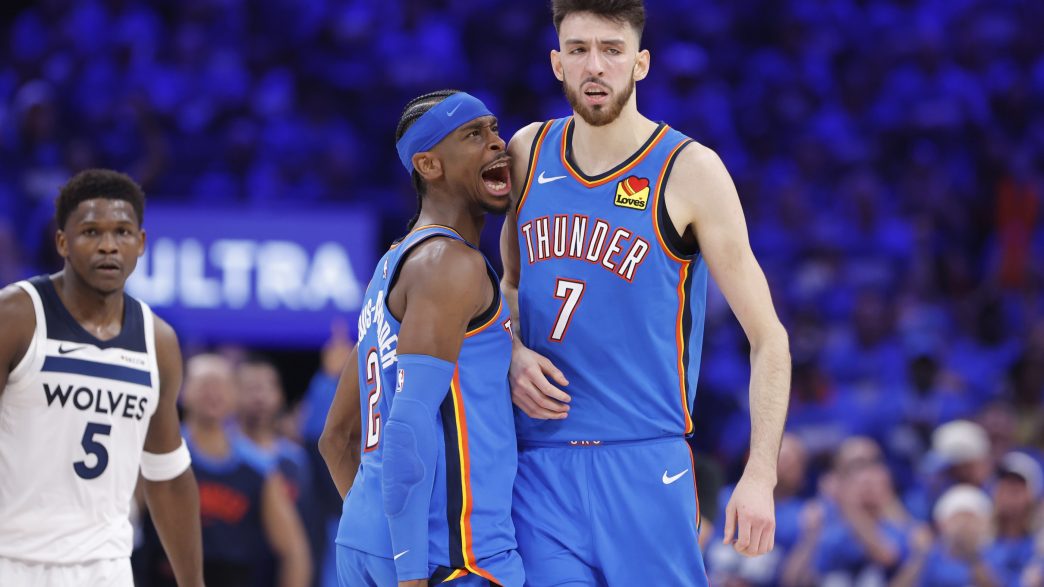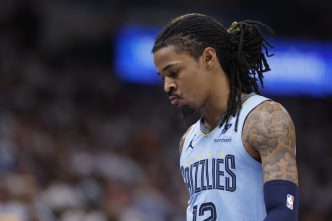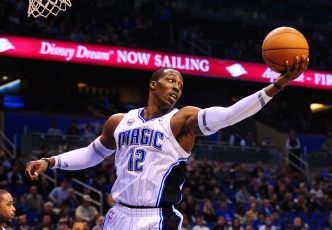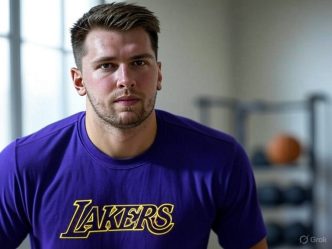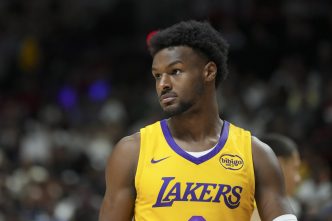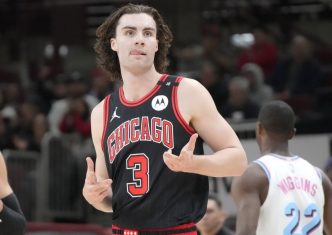The story of these NBA playoffs has been all about the league’s intentional push for parity, and there’s a good reason for that. The competition feels razor-thin this postseason, with seeds taking a back seat as fans witness a true battle for the championship that seems surprisingly open.
But let’s not be fooled – while it may seem that way, the reality is quite different.
Following their commanding 118-103 victory over the Timberwolves, the Oklahoma City Thunder have taken a commanding 2-0 lead in the Western Conference finals, solidifying their position as a clear frontrunner. The perception of parity in this race mainly stems from the struggle among a mix of good-but-not-great teams vying for minimal separation. As it stands, the Thunder have become a -320 favorite to win it all according to Caesars Sportsbook.
Among the last four teams standing, Oklahoma City has set itself apart. Barring any significant injuries, they are well on their way to claiming the title. The Timberwolves might cling to the idea that they’re still in this series, but the truth is they’re facing a steep uphill battle. Whoever emerges from the East will likely find themselves on the losing end against this Thunder squad, which has proven to be very formidable.
Critics might point to the Thunder needing seven games to get past the Denver Nuggets as evidence of vulnerability, or mention potential struggles against the Memphis Grizzlies if not for Ja Morant’s injury. Yet, amidst those challenges, it’s important to recognize that once the Boston Celtics faltered in their pursuit—letting two 20-point leads slip against the New York Knicks—OKC emerged as the clear favorite.
The Timberwolves are beginning to grasp this reality on the court. They simply can’t find the answers against a Thunder team that boasts both the MVP caliber play of Shai Gilgeous-Alexander and a defense that’s among the best in NBA history. The situation is reminiscent of having a prime Aaron Rodgers at the helm of the 2001 Baltimore Ravens – it’s nearly insurmountable for opponents.
Diving deeper, it’s clear that the Thunder have the hallmarks of a classic dynasty emerging in this seemingly egalitarian NBA landscape. They combine elite defensive prowess, impressive depth, and an MVP-caliber talent—all at a young age. This team isn’t just a flash in the pan; they have the foundation to sustain success for years to come.
There are echoes of the 2015 Golden State Warriors here. That team also fast-tracked through a few playoff hurdles before blossoming into a powerhouse, driven by the brilliance of an MVP point guard and an all-time great defense. Just as the Warriors faced pressure in the second round when they found themselves down 2-1 to the Memphis Grizzlies, the Thunder have navigated their own tense moments against the Nuggets. But once those obstacles were overcome, they quickly shifted into championship form, not just capturing one title, but setting the stage for multiple championships.
The Thunder are channeling that same energy, using their tough series against Denver as a launchpad. You can almost feel the momentum building as they charge toward that finish line. With a combined 78 wins in the regular season and playoffs so far—60 of which came by double-digit margins, matching the all-time best alongside the 2016-17 Warriors—they’re proving to be a force on both ends of the court.
What makes them even scarier? They still haven’t fully unleashed their three-point shooting. During the regular season, the Thunder were the sixth-best team from beyond the arc, averaging just under 15 makes per game at a 37.4% clip. In the playoffs, those numbers have dipped to 12.1 makes at a 32.5% rate. Imagine when those shots start falling consistently!
Even without that long-range accuracy, their defense could carry them to a title on its own. Oklahoma City has excelled at stopping shots outside the arc and protecting the rim, holding the title for both areas of defensive masterpieces. They also lead the league in forcing turnovers, making it nearly impossible for teams to find their offensive rhythm.
To put it simply, when you’re elite at every key defensive metric, it’s like a pitcher who features the best fastball, curveball, and changeup in the league—the hitters can’t help but feel bewildered.
As for the Timberwolves, they’re struggling to find their footing. They’ve taken 90 three-point attempts through two games and have only managed to sink 26, which is just 28%. While that might be manageable if they were converting high-percentage two-point shots, they’re unable to do that either due to the suffocating presence of the Thunder’s defense. Even when Rudy Gobert is on the floor, Oklahoma City can effectively park their bigs at the rim without worrying about getting beat.
It’s a tough reality for Minnesota: to stay competitive over a full 48 minutes, they need to create an extraordinary shooting night, while simultaneously relying on strong performances across the board, all while hoping the Thunder stay cold. The numbers simply don’t add up.
This isn’t about knocking the Timberwolves; they are indeed one of several strong teams in a competitive NBA landscape. The point is stark: the Thunder are not merely another good team—they are a great team, and the disparity between the good and the truly excellent starts to reveal itself in moments like these.


